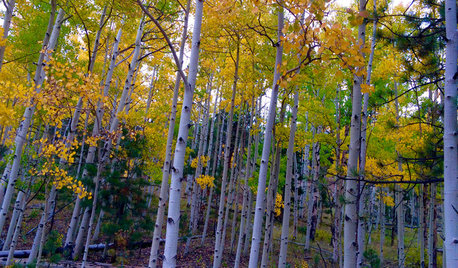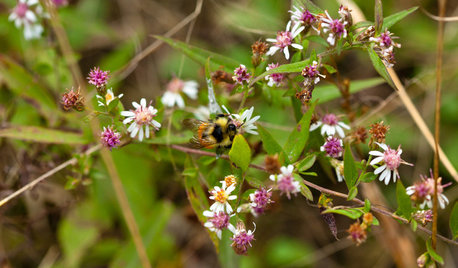Invasive species: Know your enemy
dirtworshiper
18 years ago
Related Stories

GARDENING GUIDESDo You Have This Invasive Plant in Your Yard?
Garlic mustard is spreading across the U.S. Here’s how to spot it and what to do
Full Story
GARDENING GUIDES13 North American Backyard Birds to Know
Find out about these enchanting native species and learn how to attract them to your yard
Full Story
WORKING WITH PROSWhat Do Landscape Architects Do?
There are many misconceptions about what landscape architects do. Learn what they bring to a project
Full Story
GARDENING GUIDES6 Plants That Beat Butterfly Bush for the Wildlife Draw
It's invasive, a nonnative and a poor insect magnet. Check out these better alternatives to butterfly bush in the garden
Full Story
FLOWERSRudbeckia Mania: Go Beyond Black-Eyed Susan in the Garden
Branch out from typical nursery fare, with lesser-known Rudbeckia species that have delightfully unexpected features
Full Story
EARTH DAY‘Terroir’ Brings a Sense of Place to Your Landscape
Species native to and characteristic of your region firmly root your garden and landscape
Full Story
FLOWERS AND PLANTSCalico Aster Is a Shade-Loving Pollinator Nirvana
Plant Symphyotrichum lateriflorum, an eastern U.S. native, in summer for fall blooms that scores of wildlife species will love
Full Story
REMODELING GUIDESWhen to Use Engineered Wood Floors
See why an engineered wood floor could be your best choice (and no one will know but you)
Full Story
GARDENING FOR BUTTERFLIES3 Ways Native Plants Make Gardening So Much Better
You probably know about the lower maintenance. But native plants' other benefits go far beyond a little less watering and weeding
Full Story
DECLUTTERINGSmall Steps for Keeping Your Housekeeping Resolutions
Take a different approach this year, making simple, positive changes that add up before you know it
Full StorySponsored






habitat_gardener
dirtworshiperOriginal Author
Related Professionals
Derry Landscape Architects & Landscape Designers · Clark Landscape Architects & Landscape Designers · Waterbury Landscape Contractors · Chelmsford Landscape Contractors · El Segundo Landscape Contractors · Merced Landscape Contractors · Pleasant Prairie Landscape Contractors · Tehachapi Landscape Contractors · Vashon Landscape Contractors · Agoura Siding & Exteriors · Lafayette Siding & Exteriors · West Elkridge Siding & Exteriors · Yorkville Siding & Exteriors · Hinsdale Solar Energy Systems · Titusville Solar Energy SystemsBelgianpup
dirtworshiperOriginal Author
adirondackgardener
Belgianpup
vetivert8
witsend22
locust
crankyoldman
maureensnc
Maggie_J
woodschmoe
crankyoldman
woodschmoe
yakima_belle
pablo_nh
woodschmoe
jekyll
pablo_nh
pablo_nh
lonegreyrabbit_sbcglobal_net
jolj